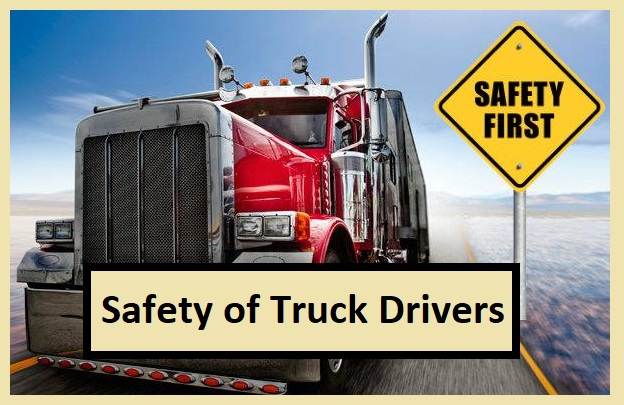Introduction of Safety of Truck Drivers
Road safety is a paramount concern in every country, with millions of lives at stake every day. In the United States, where the vast network of highways serves as the lifeblood of commerce, ensuring the safety of truck drivers is of utmost importance. These drivers play a crucial role in transporting goods across the nation, but their job comes with inherent risks. Thus, it’s imperative to implement robust safety measures to protect both truck drivers and other road users.
Road Safety Measures
Traffic Laws and Regulations
Strict adherence to traffic laws and regulations is the cornerstone of road safety. This includes obeying speed limits, traffic signals, and signage, as well as maintaining a safe distance from other vehicles. For truck drivers, understanding and complying with commercial vehicle regulations is equally vital.
Vehicle Maintenance
Proper maintenance of trucks is essential to prevent mechanical failures that could lead to accidents. For Safety of Truck Drivers , Regular inspections, timely repairs, and adherence to maintenance schedules are crucial aspects of ensuring vehicle safety.
Defensive Driving Techniques
Truck drivers are trained in defensive driving techniques to anticipate and avoid potential hazards on the road. This includes staying vigilant, scanning the road ahead, and being prepared to react swiftly to unexpected situations.
Safety Measures for Truck Drivers
Proper Training and Certification
Before hitting the road, truck drivers undergo rigorous training to acquire the necessary skills and knowledge for safe driving. Certification programs ensure that drivers are well-prepared to handle the challenges they may encounter.
Fatigue Management
Long hours behind the wheel can lead to driver fatigue, impairing judgment and reaction times. Trucking companies implement fatigue management programs for Safety of Truck Drivers and adhere to Hours of Service (HOS) regulations to prevent drivers from driving while tired.
Load Securement
Properly securing cargo is essential to prevent shifting or falling during transit, which can cause accidents. Truck drivers receive training on load securement techniques to ensure that their cargo remains stable throughout the journey.
Health and Wellness Programs
Maintaining physical and mental health is crucial for truck drivers, who often face sedentary lifestyles and high levels of stress. Health and wellness programs provide support and resources to help drivers stay fit and focused on the road.
Have a Look Here : Causes of Truck Accidents?
Technology Advancements
Telematics Systems
Telematics systems allow trucking companies to monitor vehicle performance and driver behavior in real-time. This technology provides valuable insights that can be used to improve safety and efficiency.
Collision Avoidance Systems
Advanced collision avoidance systems use sensors and cameras to detect potential collisions and alert drivers to take evasive action. These systems help mitigate the risk of accidents, especially in situations where drivers may be distracted or fatigued.
Electronic Logging Devices (ELDs)
ELDs automate the logging of driver hours, ensuring compliance with HOS regulations and reducing the likelihood of fatigue-related accidents. By accurately tracking driving and rest periods, ELDs promote safer driving practices.

Government Regulations and Policies
Hours of Service (HOS) Regulations
For the Safety of Truck Drivers HOS regulations dictate the maximum amount of time truck drivers can spend behind the wheel before taking mandatory rest breaks. These regulations aim to prevent fatigue-related accidents by promoting adequate rest periods for drivers.
Truck Size and Weight Limits
Regulations on truck size and weight limits are designed to ensure that vehicles are operated safely and do not pose a risk to other road users. Compliance with these limits is essential for maintaining road infrastructure and preventing accidents.
Safety Inspections and Enforcement
Government agencies conduct regular safety inspections of commercial vehicles to ensure compliance with safety standards. Strict enforcement of regulations helps identify and address potential safety hazards before they escalate into accidents.
Must read This Article : Top 5 Truck Accident Lawyers in USA
Industry Initiatives and Best Practices
Driver Safety Incentives
Trucking companies often implement safety incentive programs to encourage drivers to prioritize safety. These programs reward safe driving behaviors and recognize drivers who demonstrate a commitment to safety on the road.
Safety Culture in Trucking Companies
Fostering a culture of safety within trucking companies is essential for creating an environment where drivers feel empowered to prioritize safety above all else. This includes providing ongoing training, support, and resources to promote safe driving practices. This can Help in Safety of Truck Drivers.
Collaboration with Stakeholders
Collaboration between trucking companies, government agencies, and other stakeholders is crucial for addressing systemic issues and implementing effective safety measures. By working together, these parties can share best practices and resources to improve overall road safety.
Challenges and Solutions
Driver Shortage and Turnover
When we discuss about Safety of Truck Drivers , we also want to know about Challanges facing for Trucking industry. The trucking industry faces challenges related to driver shortage and high turnover rates, which can impact safety. Implementing strategies to attract and retain qualified drivers is essential for maintaining a skilled and experienced workforce.
Addressing Mental Health Issues
Truck drivers often face isolation, stress, and mental health challenges due to the nature of their job. Providing access to mental health resources and support services can help address these issues and improve overall well-being.
Integrating New Technologies Effectively
While technology advancements offer promising solutions for improving safety, effectively integrating these technologies into existing systems and workflows can be challenging. Providing adequate training and support is essential to ensure that drivers can leverage these tools effectively.
You can Also Read : How to Choose the Best Truck Accident Lawyer
Future Outlook
As technology continues to evolve and new safety initiatives emerge, the future of trucking safety looks promising. From the widespread adoption of autonomous vehicles to advancements in driver assistance systems, the industry is poised to embrace innovative solutions that enhance safety for all road users. Its Important to take steps for Safety of Truck Drivers.
Conclusion
Ensuring the safety of truck drivers is a multifaceted endeavor that requires collaboration, innovation, and a commitment to continuous improvement. By implementing robust safety measures, leveraging technology advancements, and fostering a culture of safety, we can create a safer and more sustainable future for trucking in the United States.
FAQs (Frequently Asked Questions)
**What are the most common causes of accidents involving truck drivers?
- Answer: Accidents involving truck drivers are often caused by factors such as driver fatigue, distracted driving, and mechanical failures.
**How do trucking companies promote Safety of Truck Drivers among their drivers?
- Answer: Trucking companies promote safety through training programs, incentive initiatives, and the implementation of advanced safety technologies.
**What role do government regulations play in ensuring the safety of truck drivers?
- Answer: Government regulations set standards for driver behavior, vehicle maintenance, and operational practices to ensure the safety of truck drivers and other road users.
**Are there specific challenges unique to long-haul truck drivers?
- Answer: Yes, long-haul truck drivers face unique challenges such as extended periods away from home, irregular schedules, and the risk of fatigue-related accidents.
**How can technology advancements improve safety for truck drivers?
- Answer: Technology advancements such as collision avoidance systems, telematics, and electronic logging devices can help prevent accidents, improve driver behavior, and enhance overall safety on the road.

